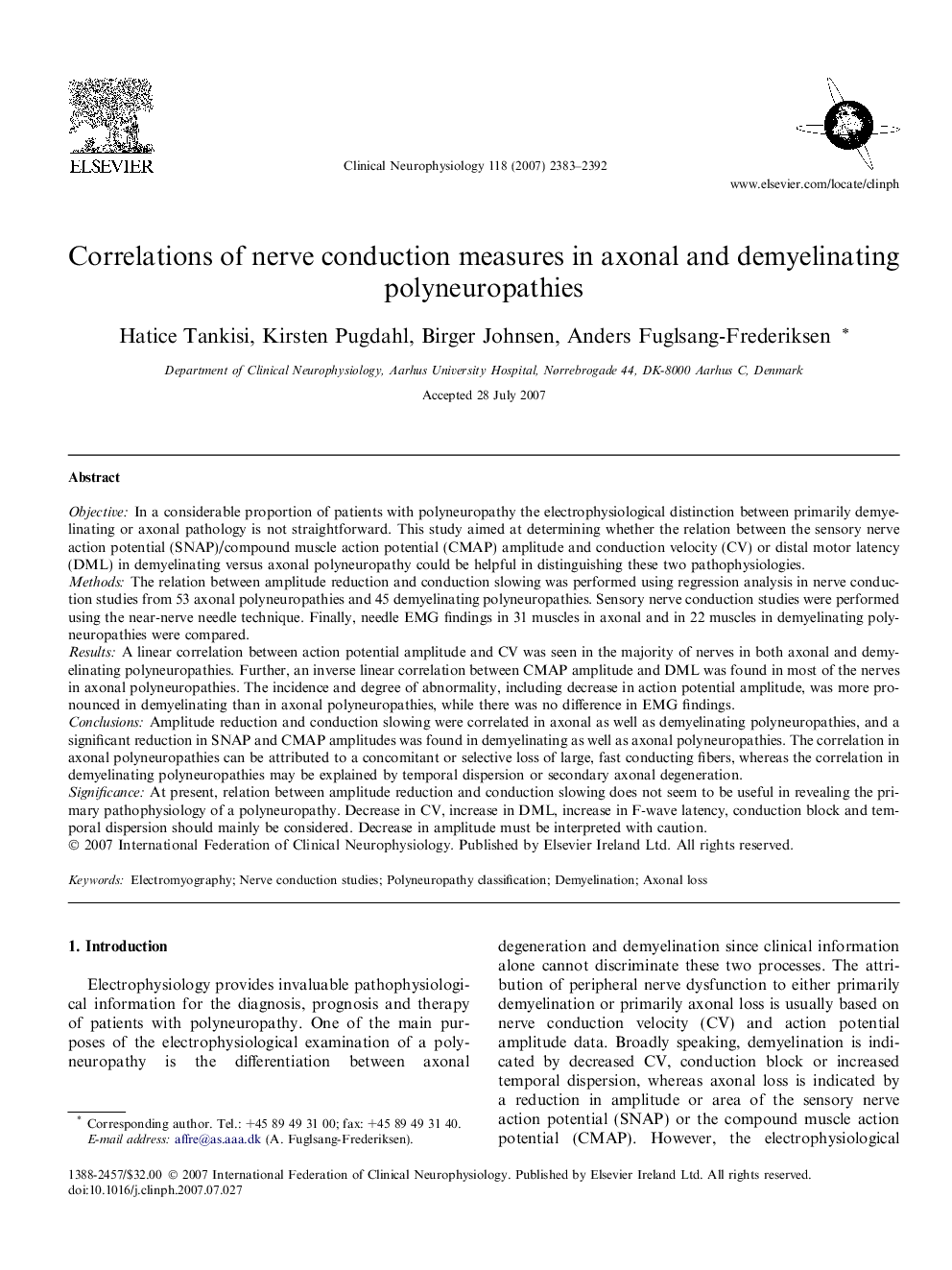| کد مقاله | کد نشریه | سال انتشار | مقاله انگلیسی | نسخه تمام متن |
|---|---|---|---|---|
| 3048202 | 1185075 | 2007 | 10 صفحه PDF | دانلود رایگان |

ObjectiveIn a considerable proportion of patients with polyneuropathy the electrophysiological distinction between primarily demyelinating or axonal pathology is not straightforward. This study aimed at determining whether the relation between the sensory nerve action potential (SNAP)/compound muscle action potential (CMAP) amplitude and conduction velocity (CV) or distal motor latency (DML) in demyelinating versus axonal polyneuropathy could be helpful in distinguishing these two pathophysiologies.MethodsThe relation between amplitude reduction and conduction slowing was performed using regression analysis in nerve conduction studies from 53 axonal polyneuropathies and 45 demyelinating polyneuropathies. Sensory nerve conduction studies were performed using the near-nerve needle technique. Finally, needle EMG findings in 31 muscles in axonal and in 22 muscles in demyelinating polyneuropathies were compared.ResultsA linear correlation between action potential amplitude and CV was seen in the majority of nerves in both axonal and demyelinating polyneuropathies. Further, an inverse linear correlation between CMAP amplitude and DML was found in most of the nerves in axonal polyneuropathies. The incidence and degree of abnormality, including decrease in action potential amplitude, was more pronounced in demyelinating than in axonal polyneuropathies, while there was no difference in EMG findings.ConclusionsAmplitude reduction and conduction slowing were correlated in axonal as well as demyelinating polyneuropathies, and a significant reduction in SNAP and CMAP amplitudes was found in demyelinating as well as axonal polyneuropathies. The correlation in axonal polyneuropathies can be attributed to a concomitant or selective loss of large, fast conducting fibers, whereas the correlation in demyelinating polyneuropathies may be explained by temporal dispersion or secondary axonal degeneration.SignificanceAt present, relation between amplitude reduction and conduction slowing does not seem to be useful in revealing the primary pathophysiology of a polyneuropathy. Decrease in CV, increase in DML, increase in F-wave latency, conduction block and temporal dispersion should mainly be considered. Decrease in amplitude must be interpreted with caution.
Journal: Clinical Neurophysiology - Volume 118, Issue 11, November 2007, Pages 2383–2392